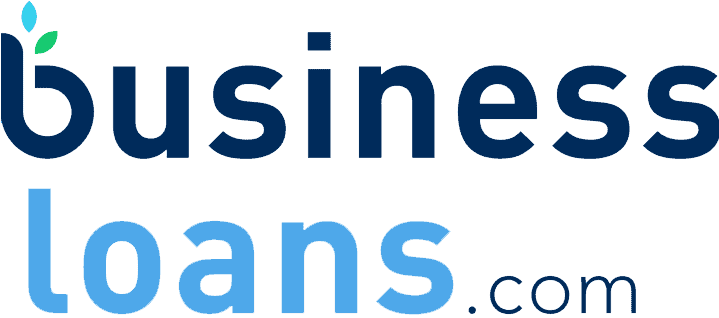Find out how calculating effective APR for short-term loans and merchant cash advances can help you easily compare and find the best loan offer for your business.
Small business owners searching for a merchant cash advance (MCA) or short-term business loan (STL) are often surprised to learn that their capital has come with a very high effective annual percentage rate (APR) that’s sometimes in the triple digits.
Lenders often don’t disclose the APR, arguing that these numbers are unnecessarily confusing and misleading for MCAs and STLs. As these types of loans have different structures than traditional installment loans, shoehorning an estimated APR out of that structure can be confusing.
However, estimated APR is essential for comparison’s sake. But to effectively make comparisons, you need to understand what APRs are for, how they work, and what their limitations are. Keep reading to learn more.
Interested in a short-term loan? Start your search with our picks for the best short-term loans for small businesses.
What Is APR?
The APR is a number that communicates the rate of borrowing over one year. For installment loans, APR shows the interest rate plus fees in a single, easily comparable number. (For a list of fees commonly charged in addition to interest, see our Guide To Business Loan Rates & Fees.)
Lenders often structure their loans differently. One might charge an origination fee, whereas another doesn’t, or they might have different interest rate structures. The APR helps borrowers more easily compare term loans to other term loans. Here’s an example:
|
Loan A |
Loan B |
| Principal |
$100K |
$100K |
| Term Length |
5 years (60 months) |
5 years (60 months) |
| Interest Rate |
6.5% |
7.5% |
| Other Fees |
$535 processing fee
3% origination fee |
None |
| APR |
8.02% |
7.5% |
| Monthly Payment |
$1,957 |
$2,004 |
| Total Financing Cost |
$20,932 |
$20,228 |
Despite the higher interest rate, Loan B has a lower APR than Loan A. If a merchant decides between these two loans, they would probably want to choose Loan B.
However, Loan B may not always be the best choice. The term length affects the APR as well. Here are loans with the same interest rates and extra fees but with a term length of 10 years:
|
Loan C |
Loan D |
| Principal |
$100K |
$100K |
| Term Length |
10 years (120 months) |
10 years (120 months) |
| Interest Rate |
6.5% |
7.5% |
| Other Fees |
$535 processing fee
3% origination fee |
None |
| APR |
7.31% |
7.5% |
| Monthly Payment |
$1,135 |
$1,187 |
| Total Financing Cost |
$39,793 |
$42,442 |
Loan C is now the better choice in this scenario. Despite the fact that it comes with more fees, this loan has a lower APR because the fees are spread out over a longer period of time.
But what if you had a choice between Loan A and Loan D? Although Loan D still has a lower APR, it has a higher overall cost of borrowing. You’ll have to decide if you want lower monthly payments ($1,957 vs. $1,187 per month) or a lower overall cost of borrowing ($20,932 vs. $42,442 in fees).
Evidently, APR is not the only metric to consider when deciding on a loan. The same principle applies to merchant cash advances and short-term loans.
How To Calculate APR For Merchant Cash Advances & Short-Term Loans
Short-term loans and merchant cash advances don’t use interest rates. These loans use a factor rate.
To determine the borrowing fee (also known as the fixed fee), the factor rate is multiplied by the borrowing amount. For example, you might get a loan with a factor rate of x1.28 (also sometimes written as 28%). That means you’ll have to repay your lender $12,800 ($10,000 x 1.28). In other words, your fee is 28% of the borrowing amount.
A factor rate is not the same thing as interest. With a factor rate, the fee is calculated once based on the original borrowing amount. With interest, the fee is accrued over time by calculating a percentage of the remaining principal until the loan is paid off.
For this reason, you cannot technically calculate an APR on a merchant cash advance or short-term loan. However, you can still calculate an estimated APR, which is typically called the “effective APR.”
Here are a few examples to illustrate the role of APR in a short-term loan:
|
Loan E |
Loan F |
| Principal |
$100K |
$100K |
| Term Length |
6 months (126 business days) |
12 months (252 business days) |
| Factor Rate |
x1.28 |
x1.28 |
| Other Fees |
2.5% |
2.5% |
| Effective APR |
118% |
59% |
| Monthly Payment |
Approx. $21,333 ($1,016 per day) |
Approx. $10,667 ($508 per day) |
| Total Financing Cost |
$30,500 ($0.30 in fees per $1 borrowed) |
$30,500 ($0.30 in fees per $1 borrowed) |
Non-intuitive as it may be, the APR on Loan E is double the APR on Loan F, despite the fact that they both carry the same total financing cost. Because Loan E is paid off over a shorter period of time, the equivalent interest rate would be higher.
For financing with short-term lengths, the effective APR gives you the rate of borrowing; it does not tell you the cost of borrowing. A high effective APR means you’ll be repaying the loan or advance very quickly; a lower effective APR means the opposite.
In the example above, the borrower will want to choose Loan F (unless they want to get it paid off as quickly as possible). But what if it weren’t as cut-and-dry as the example above? Some lenders may offer two loans to you: one with a longer term length but a higher factor rate and one with a shorter term length but a lower factor rate.
|
Loan G |
Loan H |
| Principal |
$100K |
$100K |
| Term Length |
6 months (126 business days) |
12 months (252 business days) |
| Factor Rate |
x1.2 |
x1.35 |
| Other Fees |
2.5% |
2.5% |
| Effective APR |
89% |
71% |
| Monthly Payment |
Approx. $20,000 ($952 per day) |
Approx. $11,250 ($536 per day) |
| Total Financing Cost |
$22,500 ($0.23 in fees per $1 borrowed) |
$37,500 ($0.38 in fees per $1 borrowed) |
In this example, Loan G has a higher effective APR, but a lower overall cost of borrowing. Loan H has smaller monthly payments and a lower effective APR, but a higher overall cost of borrowing. Which is the better loan? It depends on what the merchant is looking for.
How To Compare MCA & STL Offers
To fully understand the cost of the loan, you will need to evaluate additional metrics beyond effective APR:
- Total Financing Cost: Total financing cost should include the fees calculated by the factor rate, as well as any additional fees (such as an origination fee).
- Monthly Payment: Because STLs and MCAs have varying payment schedules (some require payments each business day, whereas others require payments each week or month), you will be able to compare loans on an even playing field if you calculate how much payments are per month.
- Cents On The Dollar Cost: How much do you have to pay in fees per dollar borrowed?
- Prepayment Discounts & Double Dipping Policies: Does the lender give you a discount if you repay early? Or do they participate in double dipping?
The best offer will depend on your specific funding needs. Do you need lower monthly payments? Or do you want to save as much money as possible? Do you anticipate that you’ll need more funds in the near future? (If so, you’ll want to find a funder that doesn’t double dip.)
A good funder will provide this information upfront so that you can make an informed borrowing decision. Some merchant cash advance and short-term loan providers have created a SMART Box, a standardized method for disclosing rates and fees, which includes all the information listed above, including the estimated APR.
However, if your provider does not disclose the effective APR, you can use the following calculators to get an estimate.
MCA and STL Loan Calculators
These calculators can be used to understand the full picture of a loan or advance. They’ll provide an estimate of everything you need to know to make an informed decision, including the effective APR, the cost of borrowing, and the periodic payment.
The Bottom Line On APR, Merchant Cash Advances, & Short-Term Loans
APRs can be an important metric to consider when evaluating merchant cash advance or short-term loan offers but should be used in conjunction with other metrics as well.
In addition to the APR, you should consider the total financing cost, the cents on the dollar cost, the monthly payments, and whether or not the funder has a prepayment discount.
Although this type of funding can be confusing at first glance, you will be able to make informed borrowing decisions by analyzing each of these metrics and evaluating what is most important to the health of your business.












